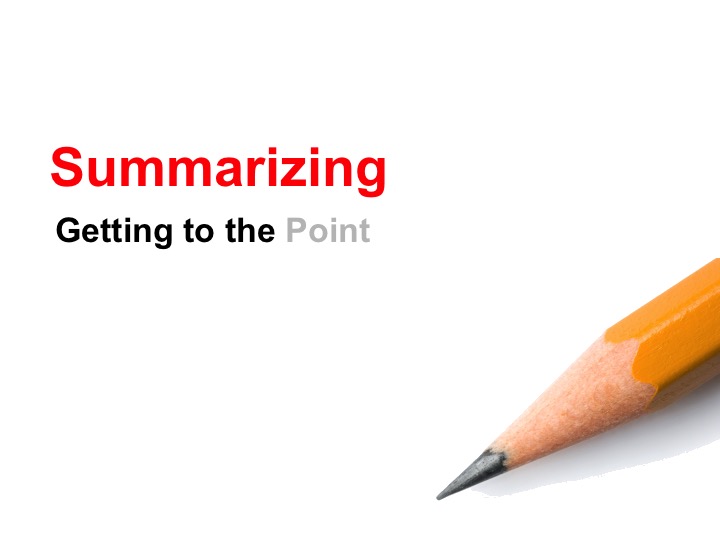
Summarizing is one of those skills that may seem very easy to a teacher but can be difficult for students who have not been properly taught how to summarize. For many years I did not even teach my seventh and eighth grade students how to summarize. I would just ask them to summarize texts and then get mad at them when they failed to produce quality summaries. I was wrong in doing this. Now I always teach my students how to write summaries.
How To Summarize a TextWriting a good summary is not as easy as it may appear. It actually requires quite a bit of finesse. First the student must read and comprehend the text. This may involve unpacking lengthy sentences and decoding challenging vocabulary. Then they must identify main ideas and key points, which means that they must have a good enough understanding of the text to distinguish between essential and nonessential information. Finally they must express this information in their own words. This means that summarizing a text requires both comprehension and expression skills.
Additionally, as per the Common Core State Standards, summaries should not contain opinions, background knowledge, or personal information; rather, a summary should be entirely text based. After years of learning to make connections between the text and themselves, students must be retrained to keep themselves out of their writing in regards to summaries. Teaching this skill surely warrants some of your class time.
Here are some resources that I used in my classroom to teach my students how to summarize. I hope that you find this page useful:
Summarizing LessonHere is an animated PowerPoint slideshow teaching students how to summarize. It includes definitions, example paragraphs, and a simple review activity using nursery rhymes. This activity is a great way to start your unit on summary.



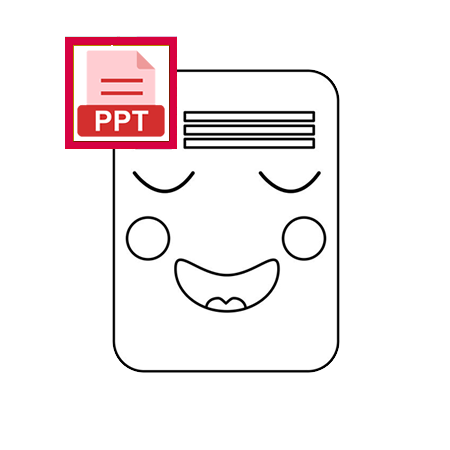
Here is a worksheet to help students practice summarizing. Read four nonfiction paragraphs about trains, highlight or underline important information, and write a title for the passage related to its main idea. Then create a summary.
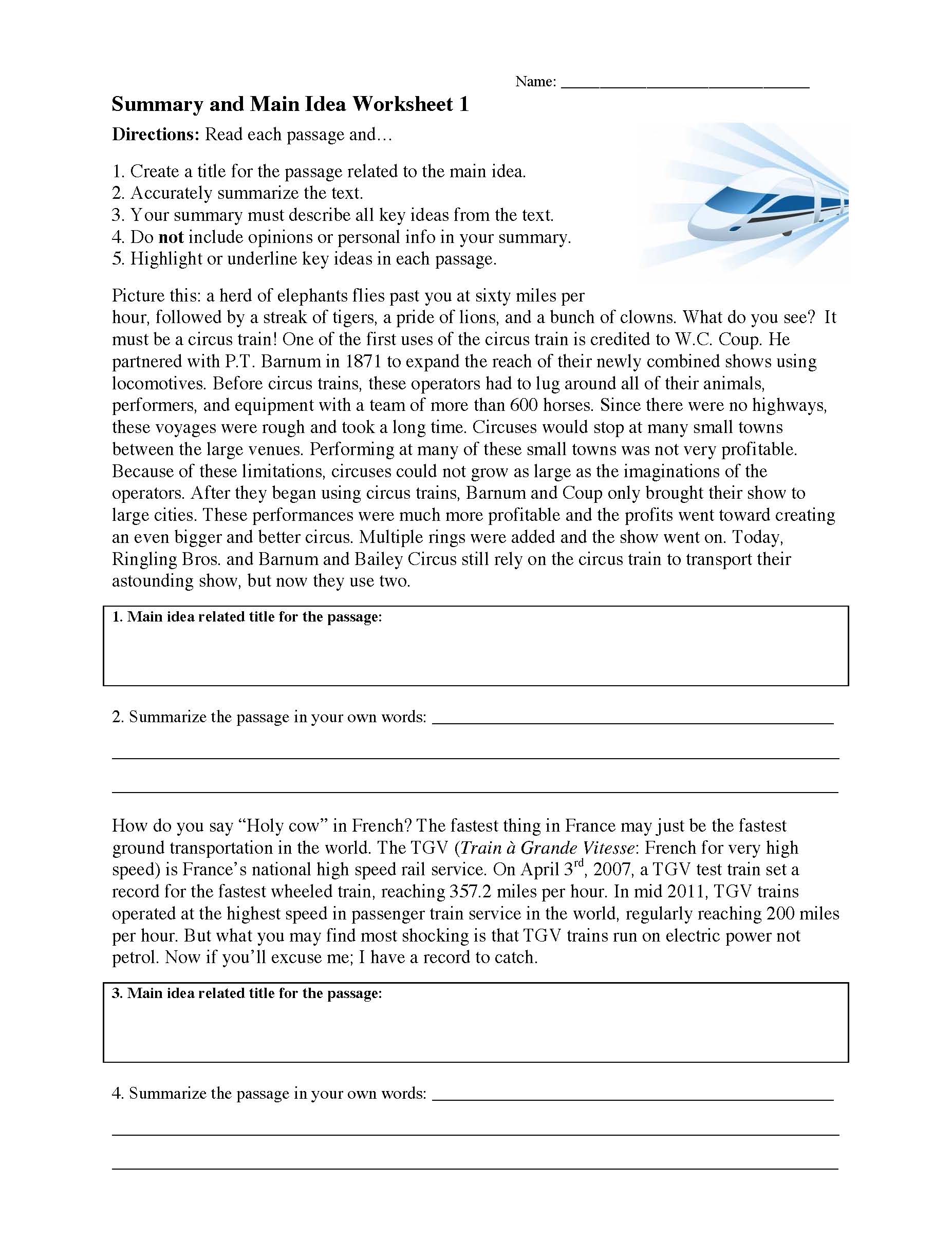



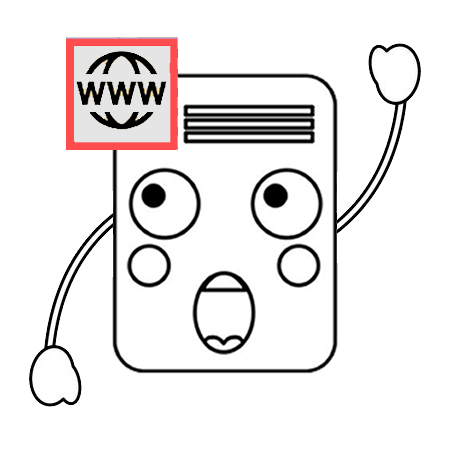 the answers for Summarizing Worksheet 1. Press this button and the preview of Summarizing Worksheet 1 will turn into the answer key." />
the answers for Summarizing Worksheet 1. Press this button and the preview of Summarizing Worksheet 1 will turn into the answer key." />
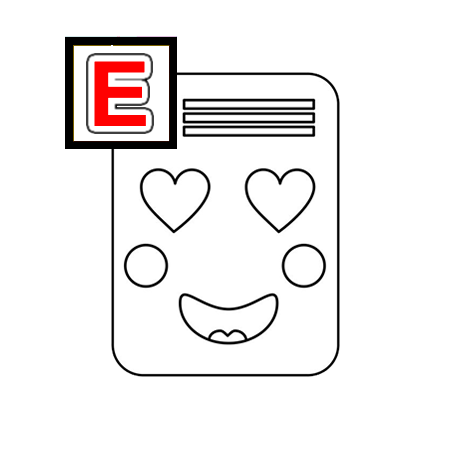
My students loved reading these four nonfiction passages about ninjas. In this summarizing worksheet, students read the passages, summarize the content, and express the main idea of each passage.
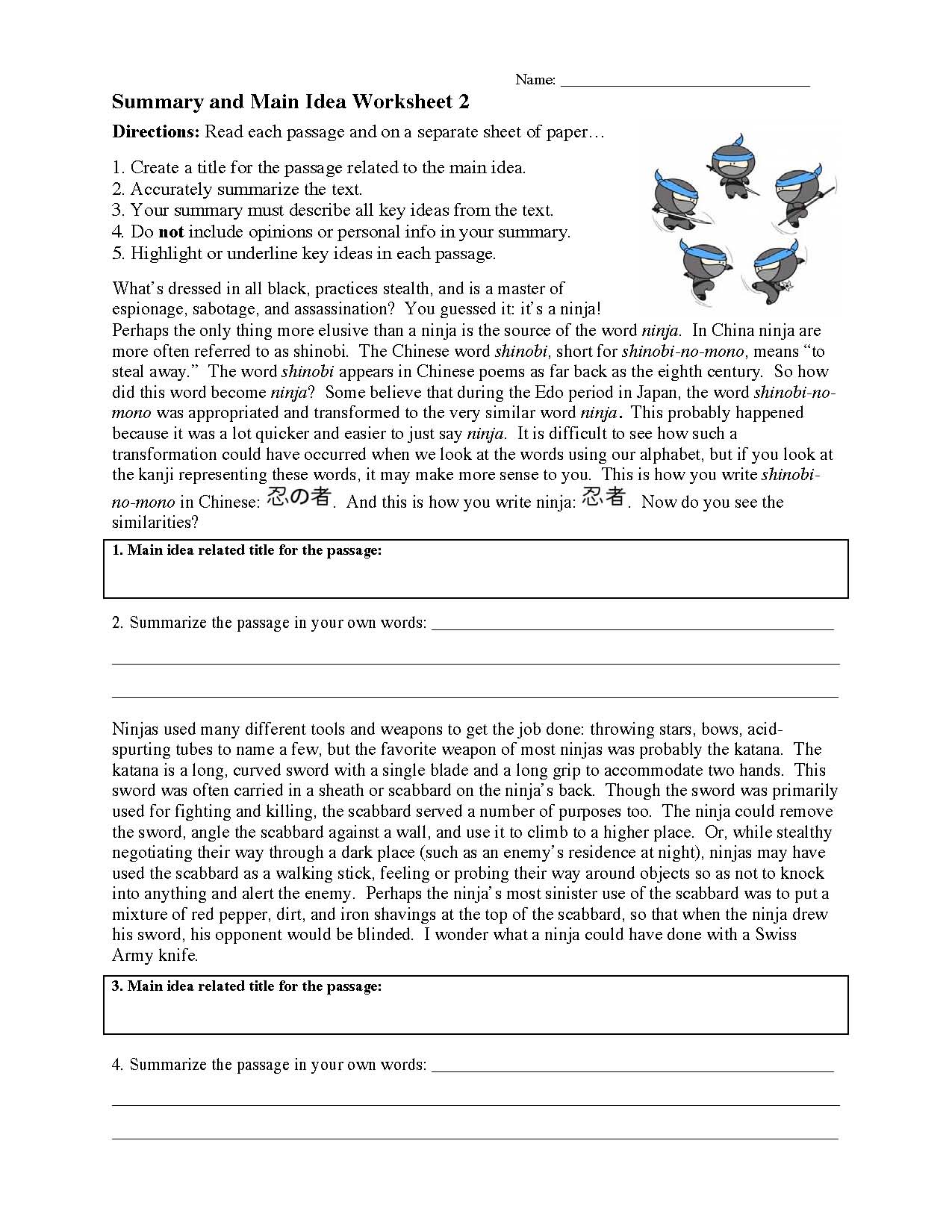



 the answers for Summarizing Worksheet 2. Press this button and the preview of Summarizing Worksheet 2 will turn into the answer key." />
the answers for Summarizing Worksheet 2. Press this button and the preview of Summarizing Worksheet 2 will turn into the answer key." />

Here's another activity to give your students practice summarzing nonfiction texts. Students read a long passage about the lost colony of Roanoke, highlight or underline important information, and summarize each paragraph.
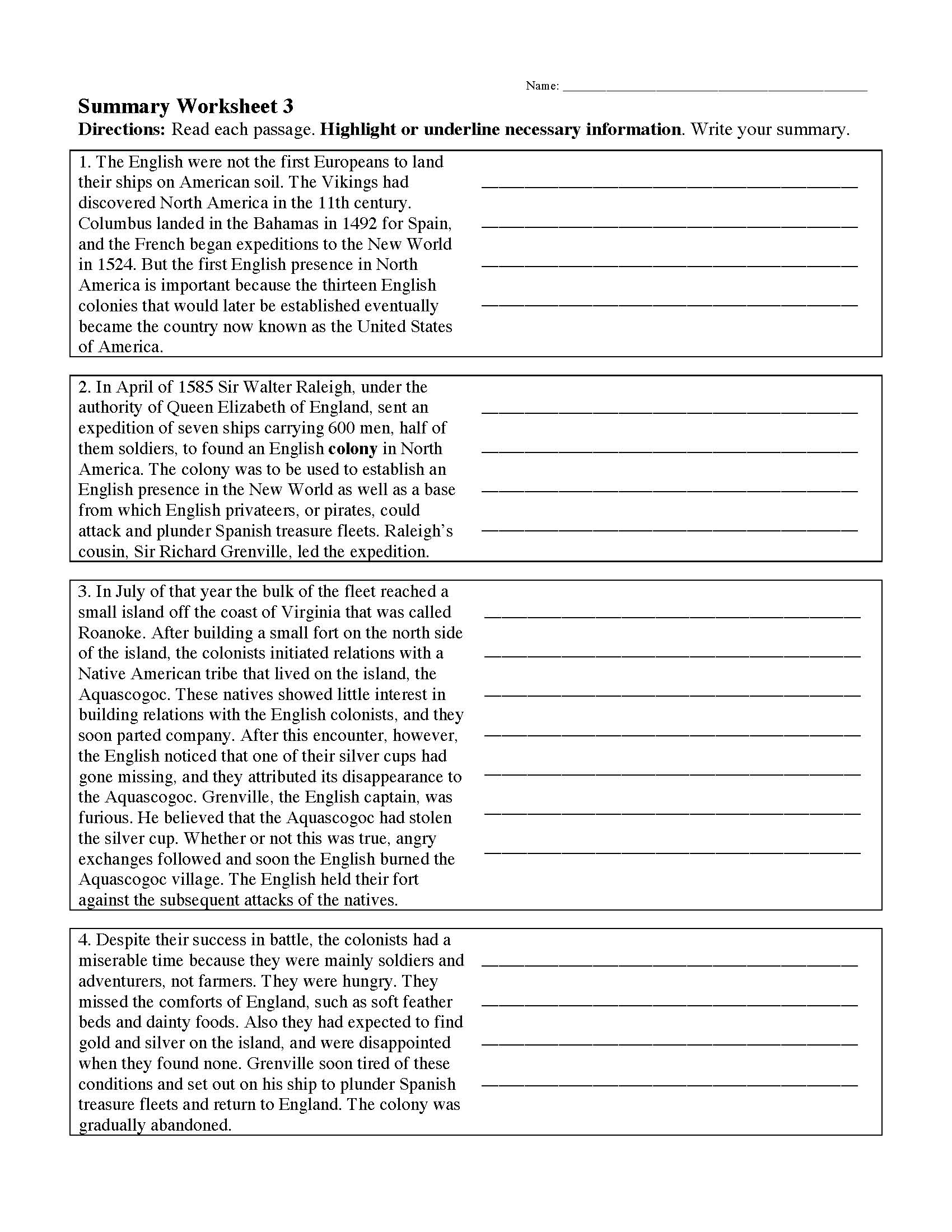



 the answers for Summarizing Worksheet 3. Press this button and the preview of Summarizing Worksheet 3 will turn into the answer key." />
the answers for Summarizing Worksheet 3. Press this button and the preview of Summarizing Worksheet 3 will turn into the answer key." />
Here is a PowerPoint slideshow with four practice passages. Read each passage twice as a class, and then give students time to create summaries. I have them work individually but you could do pairs or small groups too. Then share and discuss their summaries.




Here is a PowerPoint slideshow to help students review summarizing. The lesson looks at example summaries from the Summarizing Practice activity and considers how these responses could be improved.
 Summarizing Review Lesson. Click on it to enlarge it or view the source file." />
Summarizing Review Lesson. Click on it to enlarge it or view the source file." />
 Summarizing Review Lesson." />
Summarizing Review Lesson." />
 Summarizing Review Lesson. Use this version of Summarizing Review Lesson if you want to print or send the files as-is." />
Summarizing Review Lesson. Use this version of Summarizing Review Lesson if you want to print or send the files as-is." />
 Summarizing Review Lesson." />
Summarizing Review Lesson." />
Here is another PowerPoint slideshow to help students review summarizing. This lesson contains new examples, but also looks at summaries from the Summarizing Practice activity to show how these responses could be improved.
 Summarizing Review Lesson 2. Click on it to enlarge it or view the source file." />
Summarizing Review Lesson 2. Click on it to enlarge it or view the source file." />
 Summarizing Review Lesson 2." />
Summarizing Review Lesson 2." />
 Summarizing Review Lesson 2. Use this version of Summarizing Review Lesson 2 if you want to print or send the files as-is." />
Summarizing Review Lesson 2. Use this version of Summarizing Review Lesson 2 if you want to print or send the files as-is." />
 Summarizing Review Lesson 2." />
Summarizing Review Lesson 2." />
Here is a test to help you evaluate your students' ability to summarize. Students read a long passage about Johannes Gutenberg and highlight important information in the text. Then they summarize each paragraph, answer multiple-choice questions, and create extended responses.
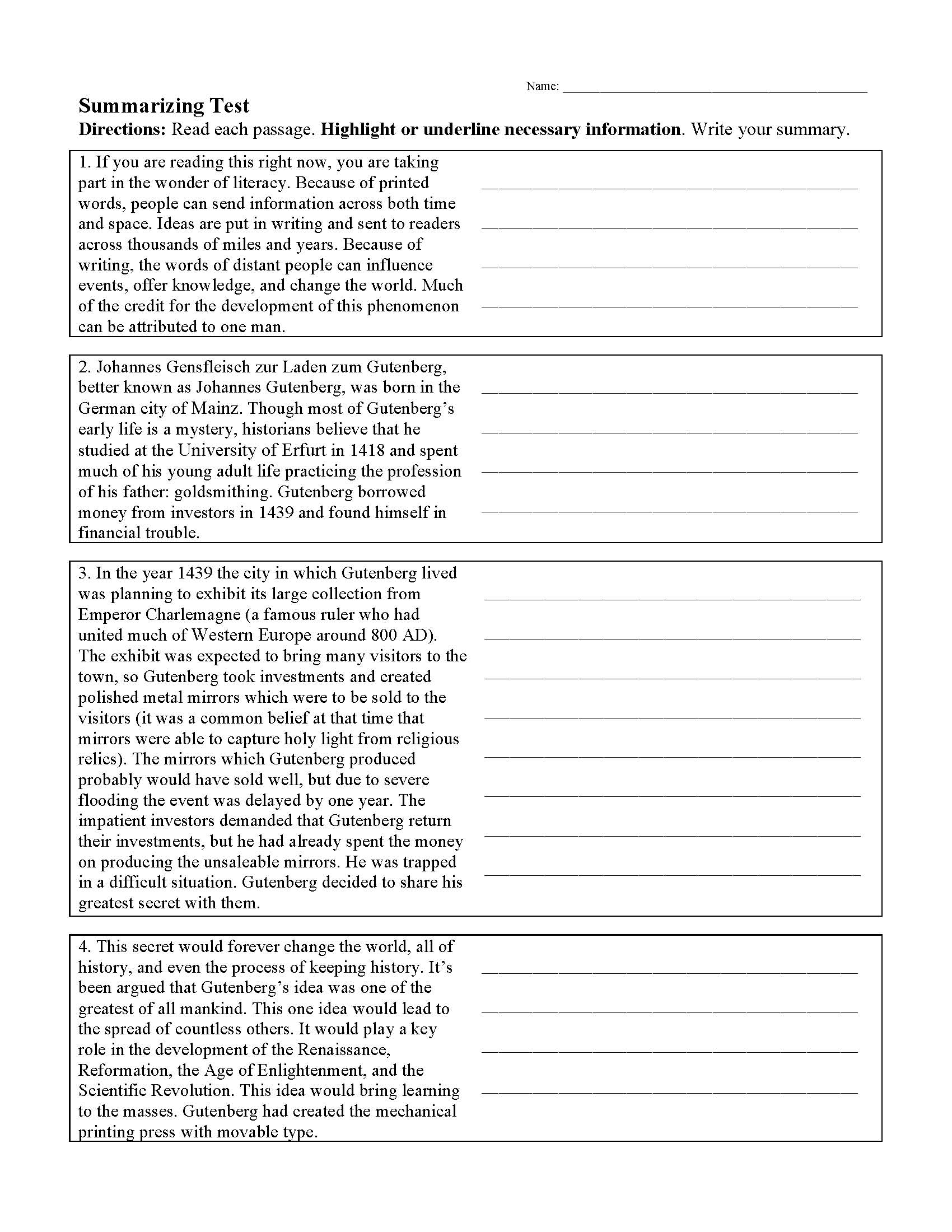



 the answers for Summarizing Test. Press this button and the preview of Summarizing Test will turn into the answer key." />
the answers for Summarizing Test. Press this button and the preview of Summarizing Test will turn into the answer key." />

R.2 - Determine central ideas or themes of a text and analyze their development; summarize the key supporting details and ideas.
RL.K.2 - With prompting and support, retell familiar stories, including key details.
RL.1.2 - Retell stories, including key details, and demonstrate understanding of their central message or lesson.
RL.2.2 - Recount stories, including fables and folktales from diverse cultures, and determine their central message, lesson, or moral.
RL.3.2 - Recount stories, including fables, folktales, and myths from diverse cultures; determine the central message, lesson, or moral and explain how it is conveyed through key details in the text.
RL.4.2 - Determine a theme of a story, drama, or poem from details in the text; summarize the text.
RL.5.2 - Determine a theme of a story, drama, or poem from details in the text, including how characters in a story or drama respond to challenges or how the speaker in a poem reflects upon a topic; summarize the text.
RL.6.2 - Determine a theme or central idea of a text and how it is conveyed through particular details; provide a summary of the text distinct from personal opinions or judgments.
RL.7.2 - Determine a theme or central idea of a text and analyze its development over the course of the text; provide an objective summary of the text.
RL.8.2 - Determine a theme or central idea of a text and analyze its development over the course of the text, including its relationship to the characters, setting, and plot; provide an objective summary of the text.
RL.9-10.2 - Determine a theme or central idea of a text and analyze in detail its development over the course of the text, including how it emerges and is shaped and refined by specific details; provide an objective summary of the text.
RL.11-12.2 - Determine two or more themes or central ideas of a text and analyze their development over the course of the text, including how they interact and build on one another to produce a complex account; provide an objective summary of the text.